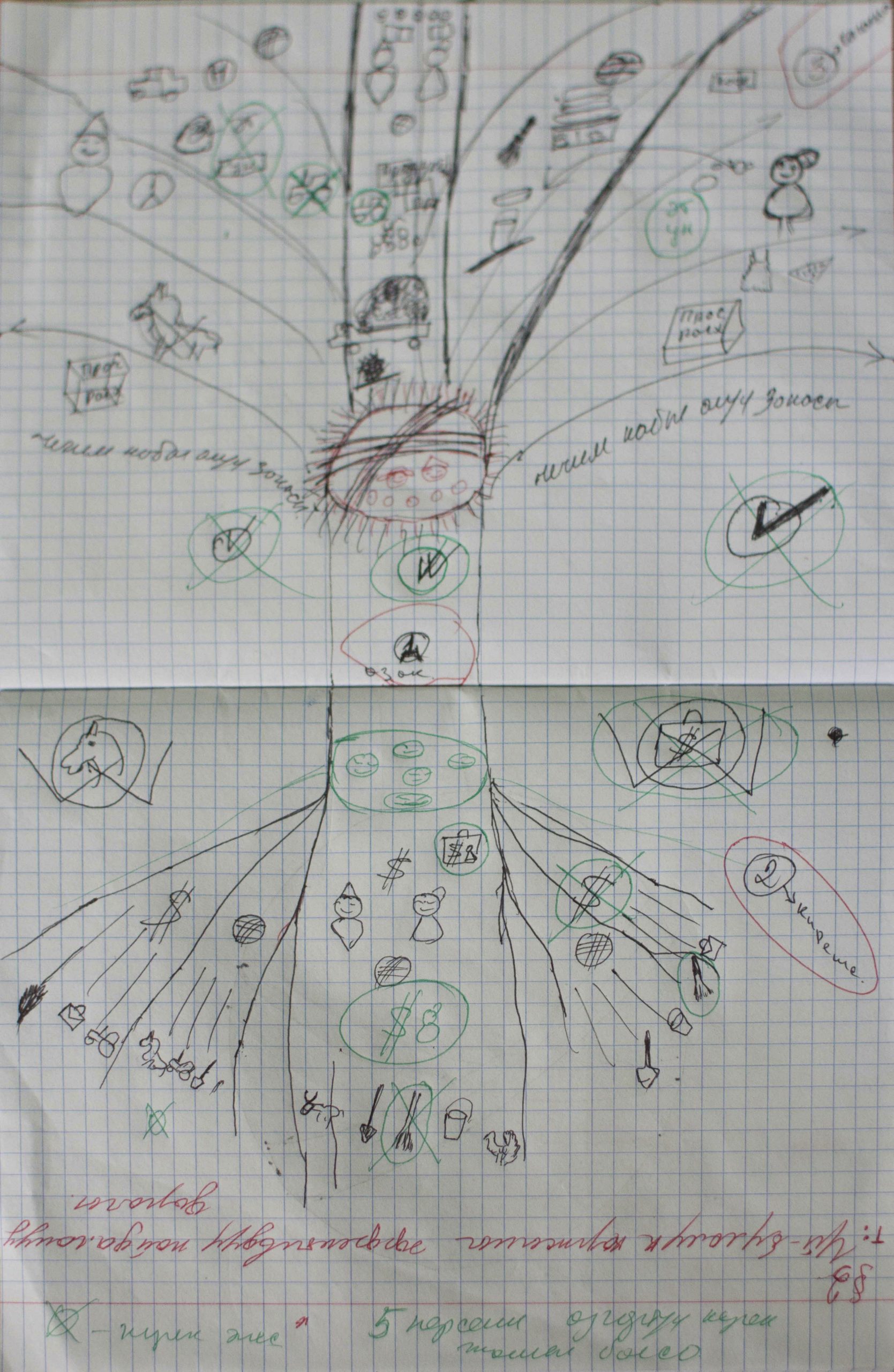About the Toolkit
This can be done as an individual reflection or group exercise. EACH PERSON ONLY FILLS IN THE ROOT THAT REFERS TO THEM. Other family members will fill in their own tree. These will then be shared and negotiated. For the group activity, participants are divided into 4-6 separate groups by gender, age and marital status and a Charade game fun process is followed as for the Diamond.
Tool Steps
STEP 1: TRUNK Trees start from a trunk representing an issue/vision/challenge or an institution like a household, business or community. Draw two lines for the trunk in the middle of the one or two sheets of paper. Leave enough space between the lines for drawings in the trunk and also top and bottom for the roots and branches. Then:
Put a circle for your current situation in relation to the vision at the bottom of the trunk.
Draw symbols in the middle of the trunk for the different family members to whom your tree will refer.
Place a symbol for your freedom vision in the middle of a red vision circle at the top of the trunk.
STEP 2: ROOTS: show inputs or causes/dimensions/perspectives. Draw lines to separate three roots at the bottom of the trunk: women left, men right, both middle. The women and men’s roots can also be subdivided into separate roots for different family members. Each person then fills in on their root the things that they themselves do that cause violence in the family. Major causes can be drawn larger and closer to the trunk so that there is a hierarchy.
STEP 3: BRANCHES: brainstorm potential solutions. Draw lines to separate three branches at the top of the trunk corresponding to the roots: women left, men right, both middle, subdivided into separate roots for different family members. Each person then fills in on their branch the things that they themselves can do that will reduce violence in the family. Major causes can be drawn larger and closer to the trunk so that there is a hierarchy.
STEP 4: SMART ACTION FRUITS: Challenge Action Trees are not just ‘talking shops’. They must always have SMART ‘action fruits’ or concrete action commitments that can be implemented by individuals within a given time-frame and tracked. Not just vague ‘solutions’ like ‘more training and awareness’. It is important also that these should be actions achievable by individuals, not a wish list for someone else or an organisation.
STEPS 5, 6: FLOWERS AND BEES: Once all individual actions are exhausted, then support needed from groups or organisations can be indicated as flowers or bees – but these are more fragile and bees only go where there is already lots of honey or they may never come.
Step 6







